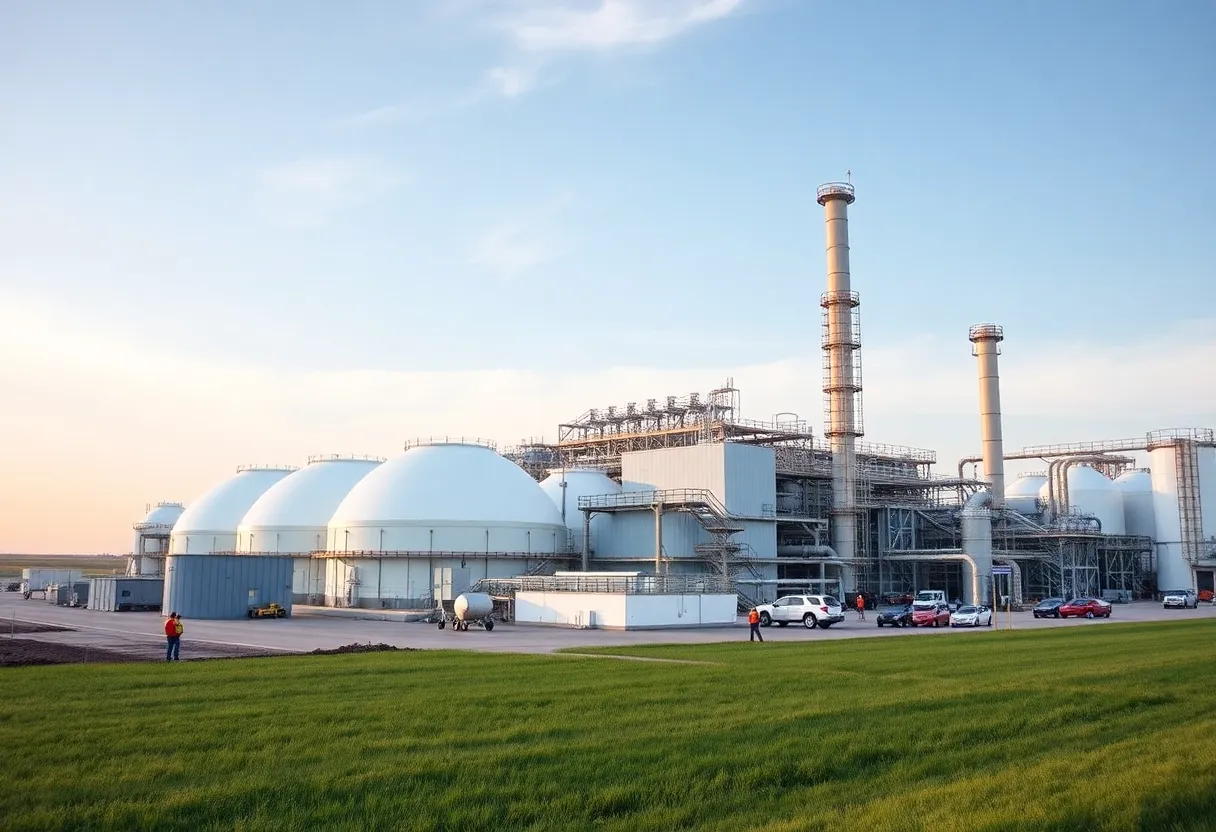Lee County, Florida, August 22, 2025
News Summary
Skanska has been awarded a roughly $435 million public-private partnership to deliver a 560,000-square-foot hospital and medical office complex in Florida. The project includes a five-story hospital and an adjacent medical office building, central energy plant, ambulatory surgery center and expanded emergency capacity. Skanska plans to use Integrated Project Delivery, design-assist, prefabrication and BIM to reduce cost and schedule, citing typical savings of 10–15%. The firm emphasizes local hiring and supplier development, with a majority of subcontracting expected to be local and a significant share awarded to minority firms. Utility work is already underway.
Skanska’s U.S. Healthcare Push: PPPs, IPD-Driven Savings, and a Global Market Outlook to 2034
Skanska’s U.S. healthcare initiative centers on a landmark public-private partnership (PPP) in Florida and an Integrated Project Delivery (IPD) approach designed to cut costs and shorten timelines. The effort is positioned within a broader market expected to expand into a $442.0 billion global opportunity by 2034, signaling a long-term play in healthcare construction as demand grows with demographics and care delivery changes. In the near term, the Florida project demonstrates how IPD and close collaboration can translate into tangible savings, with implications for Skanska’s bid landscape and investor outlook over a multi-year horizon.
Market Drivers and Growth Outlook
The U.S. healthcare construction market is undergoing a major transformation fueled by an aging population, a shift toward outpatient care, and modernization after the pandemic. The market backdrop includes a projected rise in healthcare construction spending to $69.78 billion by 2025, reflecting ongoing investment in new facilities and upgrades. On the global front, the market is seen growing from $284.6 billion in 2024 to $442.0 billion by 2034, a compound annual growth rate (CAGR) of about 4.5%. Within the United States, the market is expected to grow at a CAGR of around 5.3% from 2023 to 2030, as ambulatory surgical centers (ASCs) expand, supported by demand for safer, more energy-efficient facilities and modular construction to accelerate delivery.
Key demand indicators include a rising share of the population aged 65 and older, which is projected to grow by about 20% by 2030, driving more complex care needs and specialized facilities. Ambulatory centers are growing rapidly, with ASCs posting a healthy 12.3% CAGR in the period cited. Together, these dynamics help frame a sustained pipeline for hospital expansions, micro-hospitals, and specialty care campuses.
Flagship PPP Showcase: Golisano Children’s Hospital
At the center of Skanska’s U.S. healthcare push is a $435 million PPP for the Golisano Children’s Hospital of Southwest Florida, a joint venture with Lee Health. The project encompasses a 38,600-square-meter hospital and a 11,600-square-meter medical office building, plus a central energy plant. The team co-located design and construction teams in a “Big Room” environment, a method cited for delivering a 10% reduction in project costs and a 15% faster timeline on the construction schedule. The hospital is slated to open in late 2027 and will serve as a regional pediatric care hub, consolidating services into a single facility. Local supply-chain impact is highlighted by 55% local and 22% minority subcontractor participation on the project, underscoring Skanska’s emphasis on community partnerships as a risk-mitigation strategy.
Further Projects and Operational Highlights
Beyond Florida, Skanska has highlighted several projects and delivery innovations that illustrate its IPD and collaboration-focused approach. In North Carolina, the UNC Rex Healthcare Heart and Vascular Hospital was completed three months ahead of schedule, with savings redirected to outfit an additional floor. At the University of Washington Medical Center Montlake Tower Expansion, the team leveraged prefabrication and Building Information Modeling (BIM) to achieve $3.5 million in savings and 10 weeks of time savings. These examples showcase how IPD, design-assist, and modular strategies can translate into measurable efficiencies, reinforcing Skanska’s reputation for innovation in healthcare delivery methods.
The project pipeline extends to micro-hospitals, specialized care centers, and sustainability-focused hospital expansions. An example is Nutex Health’s 20,000-square-foot micro-hospital in Albuquerque, where Skanska contributed to design aspects. Other notable initiatives include UF Health Shands Cardiovascular/Neuroscience Hospital Expansion and the University of Virginia Health System’s University Hospital Expansion aiming for LEED Silver certification. These efforts reflect a shared emphasis on patient-centric care environments, energy efficiency, and resilient infrastructure capable of withstanding future demands.
Risk Management, Costs, and Local Sourcing
Industry challenges such as rising material costs and regulatory hurdles persist. Since 2019, steel and rebar prices have climbed roughly 15%, pressuring project budgets industry-wide. Skanska’s strategy to mitigate these risks includes strategic partnerships, closer engagement with local subcontractors, and streamlined operational practices designed to keep projects on track. The Golisano project’s subcontractor mix—predominantly local with a meaningful share of minority firms—illustrates how Skanska seeks to balance cost discipline with community impact.
Building Blocks: Supplier Development and Local Partnerships
Skanska’s long-running Building Blocks program, started in 2007, aims to grow smaller and diverse firms into larger project ecosystems. The initiative has educated about 800 companies and helped generate roughly $740 million in contracts with Skanska. The program collaborates closely with academic partners such as the University of South Florida (USF), a relationship that has been active since 2021. Through Building Blocks, Skanska offers free, multiweek courses on contracting methods, insurance bonds, safety, and sustainability, with Skanska staff teaching on topics like human resources and site logistics. The program has supported projects such as the Just Elementary School and Stewart Middle School rebuilds in Hillsborough County, a combined $70 million effort, with One Day Came among the participants. The Building Blocks initiative is described as a pathway for participants to secure project opportunities with Skanska and its partners.
Market Positioning and Investment Takeaways
With a robust portfolio of IPD-led projects, strategic PPPs, and a clear pathway to a sizable global market, Skanska positions itself as a durable player in healthcare construction. The combination of long-term hospital modernization, a pipeline that includes micro-hospitals and specialty centers, and a track record of cost and schedule savings support the view that Skanska may outperform peers over a 3–5 year horizon. Stakeholders are advised to monitor progress on the Golisano project and to watch for additional PPP opportunities in 2026 as the firm continues to expand its integrated, efficiency-focused model.
Frequently Asked Questions
Q: What is Integrated Project Delivery (IPD)?
A collaborative project delivery approach that aligns incentives across the project team to reduce waste and save time and cost.
Q: What is a public-private partnership (PPP) in healthcare construction?
A collaboration between government entities and private firms to finance, build, and sometimes maintain healthcare facilities, sharing risks and rewards.
Q: What are the IPD-driven savings highlighted in the article?
Reported savings include about 10% lower costs and a 15% faster timeline demonstrated on the Golisano Children’s Hospital project in Florida.
Q: What is the scale of the global healthcare construction market by 2034?
The global market is projected to grow from roughly $284.6 billion in 2024 to about $442.0 billion by 2034, a compound annual growth rate of around 4.5%.
Q: What is the Building Blocks program?
A Skanska initiative started in 2007 to educate and integrate smaller, diverse firms into larger projects, offering courses and mentorship and resulting in substantial contract opportunities.
| Feature | Description | Examples / Projects |
|---|---|---|
| Delivery approach | Integrated Project Delivery (IPD) and design-assist methods with co-located teams to boost collaboration and efficiency | Golisano Children’s Hospital (Big Room); UNC Rex Heart & Vascular; UW Montlake Tower Expansion |
| Funding model | Public-private partnerships that share risk and financing for hospital projects | Lee Health – Golisano Hospital PPP in Florida |
| Cost and time savings | Demonstrated reductions in cost and faster delivery through IPD and prefabrication | Golisano project (10% cost reduction, 15% faster timeline); UW Montlake Tower (time savings) |
| Project types in pipeline | Micro-hospitals, specialized care centers, and sustainability-driven expansions | Nutex Health micro-hospital; UF Health Shands expansion; UVA LEED Silver project |
| Risk management | Strategic partnerships and strong local subcontractor networks to mitigate supply chain risks | Greater local/subcontractor participation on Golisano; steel/rebar price awareness |





